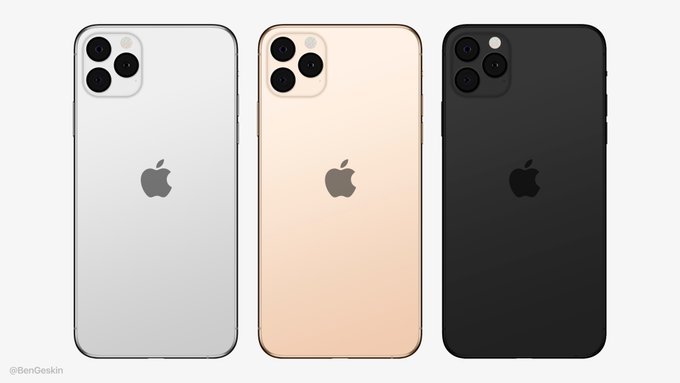Why the iPhone 11 is Apple's most crucial product for India this year
Dreamy iPhone XR déjà vu vibe?

What do you get when you combine the world’s most affluent smartphone maker with the second-fastest growing smartphone market in the world? Potentially, disruption. But for Apple, struggles.
Apple famously called India one of its top priority markets and one where it plans on staying for a “thousand years.” However, Apple’s stay in India has been far from a dream affair. iPhone sales have been at their weakest point in the last five years , which is appalling considering the fact that most of its competition has been able to successfully transform India into a key market and even climb the ranks and move more units over the same period.
Apple's struggles in India
But where exactly does the problem lie? If you know the Indian smartphone market, it’s not difficult to pinpoint the biggest snafu in Apple’s strategy- the price of iPhones. And looking at how the market winners have been functioning just affirm this axiom. With a market share of less than 1% in India now, Apple really needs a turnaround strategy.
Xiaomi entered India five years ago as a humble startup, and is now the market leader in the country. In those short five years, it was able to go from selling a few thousand to crores of smartphones a year. Xiaomi has figured out how to develop offerings for the price-sensitive Indian consumer, and doubled down on that by constantly reminding them about ‘honest pricing.’ As reviewers ourselves, offerings by Xiaomi, or Redmi in particular, have usually been easy recommendations owing to its incredible value-for-money proposition.
Agreed that comparing Apple and Xiaomi isn’t really a, well, apples to apples comparison. So we took the premium smartphone segment (phones priced at over Rs 30,000) in consideration, and again a considerably new player OnePlus predominantly rule this space, followed closely by Samsung. OnePlus’ call to fame was also bringing incredible value and flagship-grade specifications to a slightly lower price point. Moreover, OnePlus always aimed to focus on experience, which has been the key selling point for iPhones. Having mentioned that, the premium segment contributes to less than 4% of the overall smartphone sales in India, twisting the odds against Apple.
iPhones are just plain expensive in India
A lot of Apple’s Indian woes would go away if the iPhone pricing is reconsidered. India has one of the highest iPhone pricing in the world. For context, an iPhone XS with 64GB is priced at $999 in the U.S. (approximately Rs 70,000) but retails for Rs 99,900 in India, which is significantly higher. There is a multitude of reasons for this price disparity, but there are also ample ways for Apple to bring that gap closer.
The common reason often stated by Apple is the heavy import duty levied by the Indian authorities. That is true for the most mart, but when most other smartphone manufacturers could use this to their advantage, there’s no reason why Apple can not. Especially, considering the kind of cash Apple is sitting on.
Get daily insight, inspiration and deals in your inbox
Sign up for breaking news, reviews, opinion, top tech deals, and more.
As per the ‘Make in India’ scheme, smartphone companies are required to have certain manufacturing capacities in India. Chinese OEMs such as Xiaomi, Oppo and Vivo have happily set up huge factories in the country, investing thousands of crores to make India their manufacturing hub for the future. Samsung, which is the global leader in the number of smartphones sold also has a manufacturing facility in India, which is also the biggest smartphone manufacturing unit in the world and is soon expected to even help Samsung export units to other countries.
In comparison, Apple only has a rather small plant in Bangalore in partnership with Wistron Corp. which only deals in the assembly of iPhones that are generations old. Foxconn is also said to be testing the Indian waters and hopes to manufacture newer iPhones in India, but there’s no word on when that will materialise.
The Indian Government put forward a simple condition to Apple, which is basically meant to attract more investments to the country. This will not only help Apple price its products such as the iPhone more reasonably, but also help find its footing in India. Sure, setting up giant iPhone assembly lines is no easy task, but for a company as affluent as Apple, it shouldn’t take much long to get going on that part, especially when other brands have done it in a few short years.
Made in India iPhones?
Currently, all iPhones are manufactured in China. But that deal could get rough owing to the ongoing trade war between USA and China where Apple might be compelled to look at other destinations to set up the production. Moving to India might just kill two birds with the same stone.
Last week, the centre also relaxed another norm that is bound to make Apple’s position in India better-- single-brand retailers will no longer be subject to FDI norms. Earlier, if Apple were to operate a store in India, online or otherwise, it would need a minimum localisation of 30%.
Speculations also suggest that Apple will be investing up to Rs 1,000 cr in India to strengthen its retail presence. Along with an online sales portal, Apple Stores will also be set up in India starting with Mumbai. We’re unsure if this change will cause a change in the price of its products, but will at least let the company have better control over its channels.
Expanding upon this topic, Apple added "We love our customers in India and we’re eager to serve them online and in-store with the same experience and care that Apple customers around the world enjoy. We appreciate the support and hard work by Prime Minister Modi and his team to make this possible and we look forward to one day welcoming customers to India’s first Apple retail store. It will take us some time to get our plans underway and we’ll have more to announce at a future date."
The competition isn't far behind
Apple will have to act fast for a turnaround. Well-loved brands such as OnePlus are now encroaching upon the premium and ultra-premium segments, while Samsung has smartly brought slightly affordable variants of its top flagships to the market with the S10e and the smaller Note10, undercutting iPhones. And that’s been working out beautifully for these competitors. Statistics show that consumers are moving away from Apple towards the aforementioned Android alternatives is a big smack to Apple. Counterpoint analysts state that fewer than 2,20,000 iPhones were sold in India in the first quarter of 2019, practically indicating that a chunk of its loyal fanbase has also started to look out.
Indians really want to buy iPhones, but the problem, they just can’t...
How Apple can bounce back
Until recently, the best selling iPhones in India were the iPhone 6 and the iPhone SE, both of which are about 3 generations old, plainly because of their price. Talking about the newer models, the iPhone XR sold much better than the XS counterparts, once again reminding Apple how elastic the demand is. Combining these pieces of the equation spells out what the company should do, going forward.
Next week, Apple will be taking the wraps off the new iPhones, potentially called the iPhone 11, the iPhone 11 Pro and the iPhone 11 Pro Max, and are supposed to be the spiritual successors of the iPhone XR, the iPhone XS and the iPhone XS Max. For a market like India, the cheapest iPhone 11 is likely to be the most demanded model.
Demand is defined as the desire to purchase backed by a willingness to pay. There’s no doubt over the first bit, but the pricing usually renders the latter unachievable.
Considering that the iPhone 11 will not be manufactured or assembled in India from the get, it is still going to be subject to the aforementioned import duty. If Apple can somehow bring the base variant of the iPhone 11 to a more localized price where it can go head-to-head against other ultra-premium offerings, this will be the impetus the company had been looking for in regaining its stronghold.
Other strategies could include better financing options such as contracts, EMIs or even telco partnerships like we see in the western countries. This should go a long way in making the iPhones more affordable, if not directly cheaper.
It’s technically not directly possible for Apple to magically make the iPhone 11 more affordable without having an overall bigger effect. But if there’s ever been a time for Apple to put its foot down for its future, it is now, even if that means selling the iPhone 11 at a much slimmer profit margin in India. It’s high time Apple starts chasing volumes in India, and let the profits from other segments and markets offset this ‘loss’, and once again become the respected giant it once was.
Aakash is the engine that keeps TechRadar India running, using his experience and ideas to help consumers get to the right products via reviews, buying guides and explainers. Apart from phones, computers and cameras, he is obsessed with electric vehicles.
